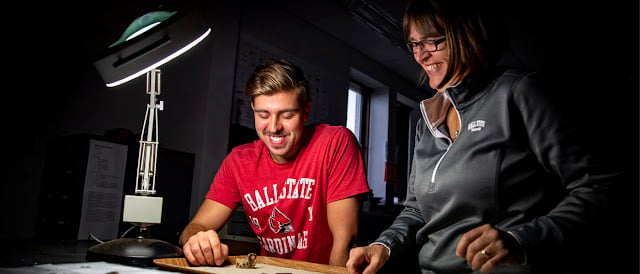Ball State University Research
Learn more about the history of the town by reading the research conducted by Ball State University Archaeologists

Ball State Alumni MagazineBall State and Tribal Leaders Bring Fresh Perspective to Ohio Battle
You have to wonder if the bodies were still warm when the scapegoating began.
After a three-hour battle, more than 800 U.S. officers, soldiers, and civilians were killed, their bodies piled along the banks of the Wabash River on land that belonged to American Indians. Hundreds more were wounded.
It happened on November 4, 1791, at what is now Fort Recovery, Ohio, as part of the roughly 10-year Northwest Indian War.

Ball State Archaeologists' researchFort Recovery Battlefield Reshaped by Ball State Archaeologists' Research
...but the research has found that "they weren't just uptown the whole time," Thompson said. For starters, there were perhaps 1,400 people on each side, or 2,800 combatants total, who couldn't all fit uptown.
The research — including terrain analysis, historic maps, large-scale metal detector surveys, GIS (geographic information system) data modeling, excavations, and location of battle-era artifacts like lead shot, musket parts, buckles and a possible bayonet piece — led to new findings about the battlefield size and battle strategy.
